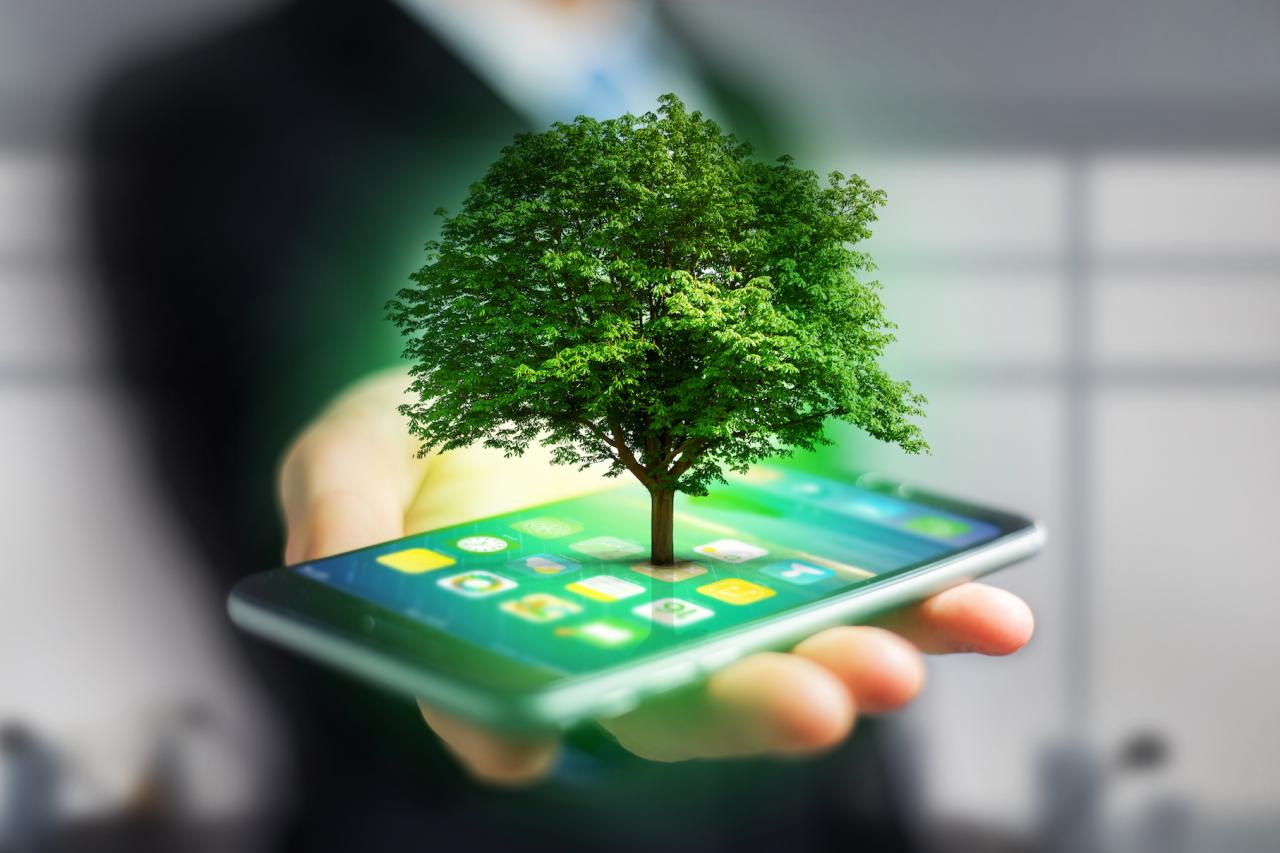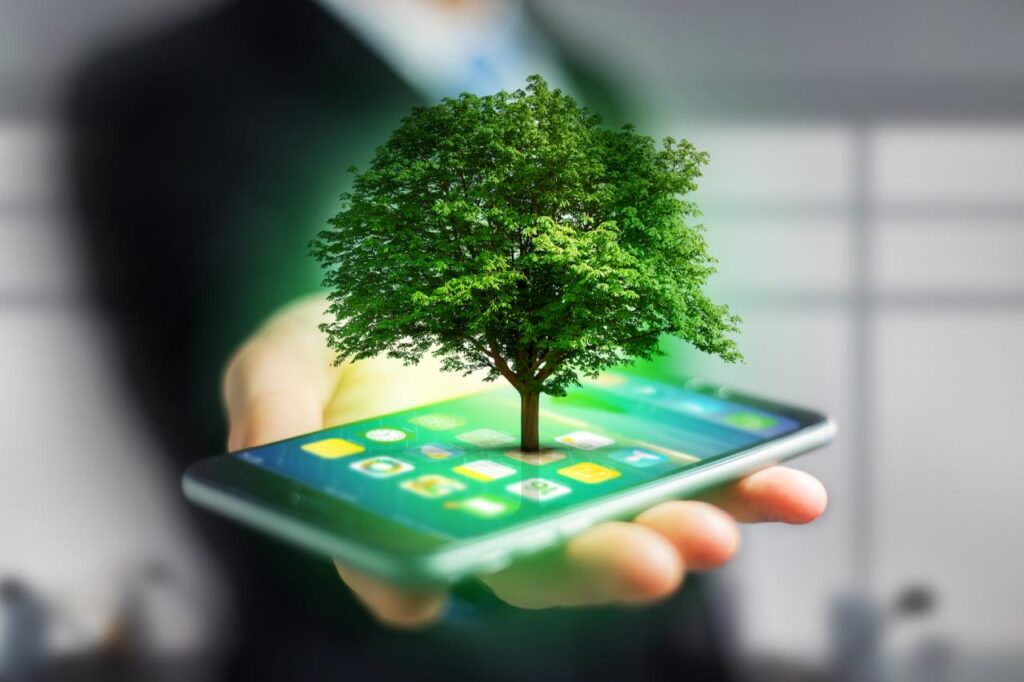The Environmental Impact of Smartphone Batteries is a pressing issue, as our reliance on these devices grows. From the mining of raw materials to the disposal of old batteries, the entire lifecycle of a smartphone battery leaves a significant footprint on our planet.
This article explores the environmental consequences of smartphone battery production and use, examining the impact on ecosystems, resource depletion, and climate change.
Discover more by delving into Ethical Considerations in Phone Photography further.
The primary materials used in smartphone batteries, including lithium, cobalt, nickel, and manganese, are extracted through intensive mining processes that can have devastating effects on the environment. Deforestation, habitat destruction, and water pollution are common consequences of these mining operations, impacting biodiversity and human health.
Moreover, the global supply chains for these materials are often opaque and raise concerns about ethical sourcing and labor practices.
Discover how The Impact of Social Media on Phone Photography has transformed methods in this topic.
The Composition of Smartphone Batteries
Smartphone batteries are the powerhouses that keep our devices running, but their environmental impact is a growing concern. The composition of these batteries plays a crucial role in their environmental footprint. Understanding the materials used in smartphone batteries, their mining processes, and global supply chains is essential to assess their environmental impact.
Obtain direct knowledge about the efficiency of Editing Your Photos Like a Pro through case studies.
Materials Used in Smartphone Batteries
Smartphone batteries primarily rely on lithium-ion technology, which utilizes several key materials:
- Lithium (Li):A lightweight and highly reactive metal, lithium is essential for the battery’s energy storage capacity.
- Cobalt (Co):Cobalt enhances battery performance, particularly in terms of energy density and stability.
- Nickel (Ni):Nickel contributes to the battery’s overall capacity and cycle life.
- Manganese (Mn):Manganese improves the battery’s safety and thermal stability.
Environmental Impact of Mining

The extraction of these materials, particularly cobalt, carries significant environmental consequences:
- Deforestation:Mining operations often involve clearing vast areas of forests, leading to habitat loss and biodiversity decline.
- Habitat Destruction:Mining activities disrupt ecosystems, displacing wildlife and damaging natural habitats.
- Water Pollution:Mining processes can release heavy metals and other pollutants into water sources, contaminating drinking water and harming aquatic life.
Global Supply Chains and Ethical Sourcing
The global supply chains for these materials are complex and often opaque. Ethical sourcing practices are crucial to ensure that mining operations are conducted responsibly and minimize environmental and social harm. While some progress has been made, challenges remain in tracking materials from mine to battery, especially for cobalt, which is often sourced from conflict-affected regions.
Discover more by delving into How to Extend Your Phone’s Battery Life further.
Manufacturing and Production of Smartphone Batteries: The Environmental Impact Of Smartphone Batteries
The manufacturing process for smartphone batteries involves several stages, each contributing to the overall environmental impact. Understanding the energy consumption, emissions, and potential risks associated with these stages is crucial for developing sustainable practices.
Get the entire information you require about Video Recording Features on Top Android Phones on this page.
Manufacturing Processes and Environmental Impact
The manufacturing of smartphone batteries involves several key steps:
- Material Processing:Extracted materials undergo refining and processing to prepare them for battery production. This stage often involves significant energy consumption and emissions.
- Electrode Fabrication:Electrodes are created by coating thin films of active materials onto metal foils. This process can generate hazardous waste and require specific handling procedures.
- Battery Assembly:Electrodes, separators, and electrolytes are assembled into a battery cell. This stage involves the use of organic solvents and other potentially harmful chemicals.
- Packaging and Testing:Batteries are packaged and undergo rigorous testing to ensure quality and safety. This stage typically involves plastic packaging and energy consumption for testing procedures.
Environmental Risks of Hazardous Chemicals
Battery production relies on various chemicals, some of which pose significant environmental risks. Organic solvents used in electrode fabrication and electrolyte preparation can release volatile organic compounds (VOCs) into the atmosphere. Heavy metals, such as lead and cadmium, are also used in some battery components, and their disposal can contaminate soil and water.
Sustainable Manufacturing Practices
The battery industry is exploring sustainable manufacturing practices to minimize its environmental impact. These include:
- Recycling:Recycling old batteries can recover valuable materials and reduce the need for new mining. However, recycling rates for smartphone batteries remain low.
- Renewable Energy:Utilizing renewable energy sources for battery production can significantly reduce greenhouse gas emissions.
- Closed-Loop Manufacturing:Implementing closed-loop manufacturing systems can minimize waste generation and resource consumption.
The Lifecycle of Smartphone Batteries
The lifespan of a smartphone battery is finite, and its disposal poses environmental challenges. Understanding the factors that contribute to battery degradation and the environmental impact of different disposal methods is crucial for managing the lifecycle of these batteries responsibly.
Battery Lifespan and Degradation
The lifespan of a smartphone battery is typically measured in charge cycles. Each charge cycle represents a full discharge and recharge of the battery. Factors that affect battery lifespan include:
- Charging Cycles:Frequent charging and discharging can degrade the battery over time.
- Temperature:Extreme temperatures, both hot and cold, can accelerate battery degradation.
- Usage Patterns:Heavy usage, such as playing games or streaming videos, can drain the battery faster and shorten its lifespan.
Disposal Methods and Environmental Impact
Disposing of old batteries improperly can lead to environmental pollution. Common disposal methods include:
- Landfill:Landfilling batteries can release hazardous materials into the soil and groundwater.
- Incineration:Incinerating batteries can release toxic fumes into the atmosphere.
- Recycling:Recycling batteries allows for the recovery of valuable materials and reduces the need for new mining. However, recycling processes can also generate emissions and require specialized facilities.
Smartphone Battery Lifecycle Flow Chart
The following flow chart illustrates the stages of a smartphone battery’s lifecycle, from mining to disposal, highlighting the environmental implications at each stage:
[Diagram of a flow chart showing the stages of a smartphone battery’s lifecycle, from mining to disposal, highlighting the environmental implications at each stage.]
Check what professionals state about Fast Charging Explained: Different Technologies Compared and its benefits for the industry.
The Environmental Impact of Smartphone Battery Use
The environmental impact of smartphone battery use extends beyond the manufacturing and disposal stages. The energy consumption associated with charging batteries and the overall environmental footprint of battery production and use are significant factors to consider.
Energy Consumption and Carbon Emissions
Charging smartphone batteries consumes energy, which can contribute to carbon emissions depending on the energy source used. The amount of energy consumed varies depending on the battery capacity and charging frequency.
Understand how the union of Top 10 Android Phones with the Longest Battery Life can improve efficiency and productivity.
Environmental Impact of Production and Use
The environmental impact of smartphone battery production and use encompasses several factors:
- Greenhouse Gas Emissions:Battery production and use contribute to greenhouse gas emissions, primarily from energy consumption and material processing.
- Resource Depletion:The extraction of materials for battery production puts a strain on natural resources, particularly lithium and cobalt.
- Waste Generation:Battery production and disposal generate significant waste, including hazardous materials.
Environmental Impact of Different Battery Types
The environmental impact of different types of smartphone batteries can vary. The following table compares the environmental impact of lithium-ion, lithium-polymer, and solid-state batteries:
| Battery Type | Energy Density | Lifespan | Environmental Impact |
|---|---|---|---|
| Lithium-ion | High | Moderate | Moderate |
| Lithium-polymer | High | Moderate | Moderate |
| Solid-state | High | High | Lower (potential) |
Sustainable Solutions for Smartphone Batteries
Addressing the environmental impact of smartphone batteries requires innovative solutions and responsible practices. Utilizing recycled materials, exploring emerging battery technologies, and promoting consumer awareness are crucial steps towards sustainability.
For descriptions on additional topics like Phone Photography Accessories for Better Results, please visit the available Phone Photography Accessories for Better Results.
Recycled Materials in Battery Production
Recycling materials from old batteries can reduce the need for new mining and minimize environmental impact. However, challenges remain in separating and refining materials from complex battery compositions.
Emerging Battery Technologies
Emerging battery technologies offer potential for improved performance and reduced environmental impact. These include:
- Solid-State Batteries:Solid-state batteries use solid electrolytes instead of liquid electrolytes, offering enhanced safety and energy density. They also have the potential to reduce the use of hazardous materials.
- Lithium-Sulfur Batteries:Lithium-sulfur batteries utilize sulfur as the cathode material, offering higher energy density and potentially lower cost compared to lithium-ion batteries. However, they face challenges in terms of cycle life and stability.
Consumer Recommendations for Sustainable Battery Use, The Environmental Impact of Smartphone Batteries
Consumers can play a significant role in minimizing the environmental impact of their smartphone battery use. Here are some recommendations:
- Responsible Charging Practices:Charge your phone only when necessary and avoid overcharging. Consider using energy-efficient chargers.
- Battery Care Tips:Avoid extreme temperatures, use original chargers, and avoid draining the battery completely.
- Proper Disposal Methods:Dispose of old batteries responsibly through designated recycling programs or drop-off locations.
End of Discussion
As we move towards a more sustainable future, it is crucial to address the environmental impact of smartphone batteries. By promoting responsible sourcing, embracing sustainable manufacturing practices, and adopting innovative battery technologies, we can mitigate the negative consequences of our reliance on these ubiquitous devices.
Find out further about the benefits of Smartphone Photography Tips and Tricks that can provide significant benefits.
By understanding the environmental implications of smartphone batteries, we can make informed choices as consumers and advocate for responsible practices within the industry.
Expand your understanding about Wireless Charging: A Comprehensive Guide with the sources we offer.
FAQ Compilation
What are the main environmental concerns associated with smartphone battery production?
The main environmental concerns associated with smartphone battery production include deforestation, habitat destruction, water pollution, and the release of hazardous chemicals during manufacturing.
What can consumers do to reduce the environmental impact of their smartphone batteries?
Consumers can reduce the environmental impact of their smartphone batteries by using their devices responsibly, charging them efficiently, and recycling or properly disposing of them when they reach the end of their life.
What are some promising solutions for reducing the environmental impact of smartphone batteries?
Promising solutions for reducing the environmental impact of smartphone batteries include using recycled materials, developing more sustainable mining practices, and exploring alternative battery technologies, such as solid-state batteries.












